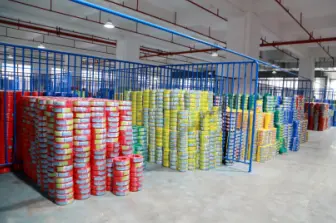What is the Difference Between Power Electrical Cables and Aerial Cables?
The use of electrical power cables has a history of more than 100 years. In 1879, American inventor T.A. Edison wrapped jute on a copper rod and threaded it into an iron pipe, then filled it with asphalt mixture to make a cable (prototype of electrical power cable). He laid this cable in New York and has since pioneered underground power transmission. In the early 1960s, France, Sweden, Finland and other countries began to research and develop aerial cables based on their dense forests. Aerial cables appeared almost a century later than power cables. So, what is the difference between electrical power cables and aerial cables?
1. The nature of electrical power cables and aerial cables is different
Electrical power cables are cables with conductors outsourced with high-quality insulation materials and various protective layers. Its main function is the same as that of aerial cables, transmitting and distributing large-capacity electric energy in the power system. Electrical power cables are often used in urban underground power grids, power station outlet lines, internal power supply in industrial and mining enterprises, and underwater transmission lines across the river. The difference between electrical power cables and aerial lines is that electrical power cables can be laid in a variety of environments, safe and hidden, not disturbed by external climate change. They are less maintenance, durable (generally require more than 40 years).
Aerial cable (full name aerial insulated cable) is an aerial wire equipped with an insulating layer and a protective sheath. It is a special cable manufactured with a production process similar to cross-linked cables. It is a new power transmission method between aerial wires and underground cable. Aerial cable is a cable construction method in which the cable rack is hung on a pole with a certain height from the ground. Compared with underground cables, although aerial cables are more susceptible to external influences, they are not safe or beautiful enough. And they are easy to erect, widely used in places where it is difficult to lay underground cables. They also have low construction costs.
2. The classification of electrical power cables and aerial cables is different
Electrical power cables can be divided into medium and low voltage power cables (35 kV and below), high voltage cables (above 110 kV), ultra-high voltage cables (275 to 800 kV) and UHV cables (1000 kV and above) according to voltage levels. In addition, they can be divided into AC cables and DC cables according to the current system.
General aerial cables are single-core and can be divided into hard aluminium wire structures, hard drawn copper wire structures, aluminium alloy wire structures, steel core or aluminium alloy core support structures and self-supporting three-core pattern structures and so on according to their different structures. (The wire core can be hard aluminium or hard copper wire)
3. The characteristics of electrical power cables and aerial cables are different
Electrical power cables are generally buried in the soil or laid indoors in trenches, and tunnels. The insulation distance between the lines is small. No poles are needed. And they occupy a small area and even do not take up space on the ground. In addition, the electrical power cable has high reliability and stable transmission performance and is less affected by climatic conditions and the surrounding environment.
Aerial cables have the main characteristics of high reliability of power supply, good power supply safety, convenient erection and maintenance, and reasonable economy. The domestic aerial cable was put into trial operation in Shanghai in 1988. The trial aerial cable runs along the dense boulevard of Huaihai Road. After the typhoon season in Shanghai and the high temperature in summer, it runs well, and its power supply failure rate is much lower than that of the original aerial bare conductor. Aerial cables will not produce water-tree degradation in use. After years of operation, the insulation quality of the cables has not significantly decreased and the power supply safety is good.
You may also be interested in the following products offered by Jenuincable:
ABC cable, Xlpe cable, Yy cable, PVC insulated cable, Fire-rated cables, Orange cable, etc.
 English
English  français
français  Deutsch
Deutsch  العربية
العربية  tiếng việt
tiếng việt  ไทย
ไทย  čeština
čeština  Indonesia
Indonesia  Eesti
Eesti  български
български  slovenčina
slovenčina 



